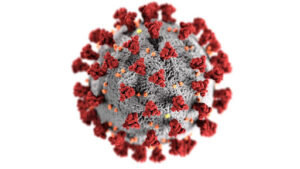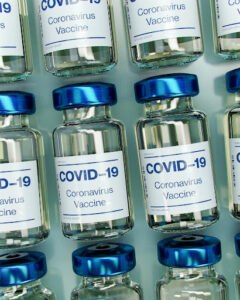The Coronavirus pandemic has created many changes and new norms for our society. Although many people have been vaccinated in the past for a variety of diseases, the vaccines used to prevent COVID-19 have more buzz around them than has been seen in a long time. Discussions about different vaccination brands, getting one or two doses, and political conflicts around the vaccine have become a regular occurrence. With false information constantly being thrown around as facts, it is important to keep yourself and your family informed. Here are a few facts about the COVID vaccine to make sure your children know before they get confused by misinformation.

How Vaccines Work
One of the biggest debates around the vaccine comes from a disagreement about if taking the vaccine is safe and effective or if it is useless and potentially dangerous. It is important for children to know that modern science has supported vaccinations for decades as preventative protection against disease that incorporates our understanding of both the human body’s defense system and viruses. According to the CDC, the basic biology behind these concepts is that viruses enter the body as germs that attack our cells and multiply. When this happens, our white blood cells are able to fight these germs in several ways, though it takes time for them to learn how to do so. Once these cells figure out how to fight the virus however, they never forget and are able to fight it off much more easily in the future. When explaining this concept to your children, it might be helpful to describe this as a story of good versus evil, with the big bad germs attacking our innocent cells.
A vaccination introduces a weakened variation of a virus (in this case COVID-19) into your bloodstream, allowing the white blood cells to familiarize themselves with it. The version of the virus that is exposed to your system is safe and has been carefully measured and studied. Although it will not be enough to actually make you fully sick, you may experience slight symptoms for a day or two as your body learns how to fight the germs. After your white blood cells know how to fight off the COVID-19 virus, they will remember and be able to respond quickly and effectively if the virus ever returns.
Vaccine Brands
Another major difference between the COVID-19 vaccine and previous vaccines is that the general public knows that several companies are making slightly different vaccines. In the United States, the most common brands are Pfizer, Moderna, and Johnson and Johnson (J&J). These names have become so well-known that it is likely your kids have already heard of them and know they are related to the coronavirus. Although all three of these companies’ vaccines are safe, effective, and FDA approved, there are some differences between them.
One of the most noticeable inconsistencies is that while the Pfizer and Moderna vaccines require two doses, the J&J vaccine only requires one. You can explain this to your children by simply telling them that the vaccines interact differently with the body and Pfizer and Moderna require more exposure to deliver full protection. According to Yale Medicine, another difference is that Pfizer and Moderna have been observed to be slightly more effective, with 95% and 94.1% efficacy respectively, as opposed to the J&J vaccine that has a protection effectiveness of 72%. Despite this, the J&J vaccine is the easiest to transport and store, while Pfizer is the most difficult to work with, showing that there are costs and benefits with each option. Additionally, Pfizer is the only vaccine that is recommended for those under the age of 18. This is an important point to take into account when deciding which brand is the best for your family.

Social Responsibility and Herd Immunity
When discussing the COVID-19 vaccine to your children, it is important to acknowledge the social responsibility one bears to protect themselves and others from the virus. When getting vaccinated, an individual is not only benefiting themselves, but they are helping their family and friends to get through the pandemic. This can be understood through the context of herd immunity, a concept stating that when a large percentage of the population becomes immune to a disease or virus, the likelihood of that illness spreading and thriving decreases dramatically. Thus, when your children are getting vaccinated, they are helping protect themselves, their families, their schools, and the larger surrounding community as well.
As the pandemic approaches its conclusion, it is important to be able to decipher between facts and fiction, and it is crucial that your children can do so too. Helping your kids understand that vaccines are helpful and effective and ensuring that they receive a vaccination themselves makes the world a safer place. Keep yourself informed so you can answer any questions your children may have, while keeping them and the rest of your family protected.
Written By: Matt Beetham
Your NSTEM Journey Begins Here!
